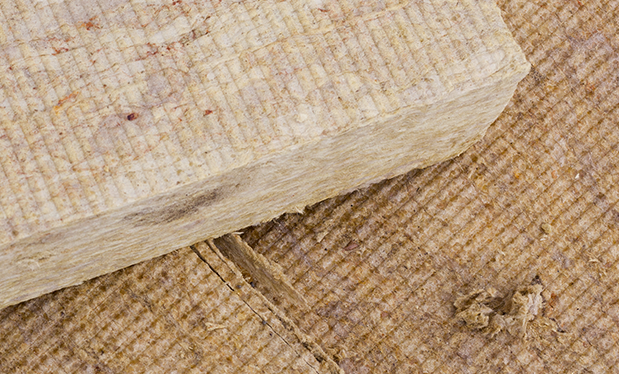Located 6 miles northwest of Dallas, Dallas Love Field is a city-owned, public airport serving more than 6 million passengers annually. Commissioned during World War I, the airport was established Oct. 19, 1917, by the U.S. Army. Named for Moss L. Love, the 10th fatality in the U.S. Army's history and a member of the U.S. Army's 11th Cavalry, Love Field served as a base for flight training.
At the end of World War I, in December 1919, Love Field was deactivated. In 1927, Dallas purchased the airport for civilian use, and it became a commercial travel hub during the 1940s and 1950s. In 1963, Lyndon B. Johnson took the oath of office on Air Force One at Dallas Love Field following the assassination of President John F. Kennedy. In 2003, the airport was designated a historic site.
In 2009, a $519 million Dallas Love Field Modernization Program was implemented to accommodate increased traffic resulting from repeal of the Wright Amendment, now allowing nonstop flights from Dallas Love Field across the U.S. The renovations were designed to expand and transform the airport into a convenient, modern airport for travelers.
Selected by the modernization project team, Chamberlin Roofing and Waterproofing, Farmers Branch, Texas, helped renovate the existing main terminal's roof system and install new roof systems on the main terminal's expansion, new baggage claim area, new ticketing wing, two new concourses, and the canopies on the airport's new main entrance and roadway.
A journey begins
In March 2011, Chamberlin Roofing and Waterproofing began work on the four-year Dallas Love Field project. Workers began by removing the existing 95,000-square-foot polymer-modified bitumen roof system from the main terminal. The crew demolished the large roof in sections by measuring 1- by 1-foot areas; cutting the squares, similar to a checkerboard layout; and removing the material with tear-off shovels down to the metal deck.
After tear-off was complete, workers installed a torch-applied Soprema® two-ply polymer-modified bitumen roof system consisting of polyisocyanurate insulation, DensDeck® Prime Roof Boards attached with plates and fasteners, and torch-applied base and cap sheets.
"Our crew paid close attention to detail to install the torch-applied polymer-modified bitumen roof system precisely, carefully welding each seam to result in a clean, straight line," says Larry Johnson, senior project manager for Chamberlin Roofing and Waterproofing. "They worked diligently to install the base and cap membranes, striving to ensure the system was fully adhered with no wrinkles or blisters. They were mindful of avoiding burns and only allowed a 1/2-inch asphalt bleed out."
Before installing the roof system over the airport's new baggage claim area, Chamberlin Roofing and Waterproofing workers discovered a construction deficiency in the building. The roof deck was not sloped correctly—it was mostly flat in some areas where it should have been sloped to allow water runoff to reach the drains. The result of low- and steep-slope areas created a wavy effect across the rooftop. Soon after the discovery, a light rain confirmed ponding water would be an issue on the new roof.
The Chamberlin Roofing and Waterproofing team immediately started working on a plan to rectify the situation, redesigning the roof installation on-site. After consulting with the general contractor, workers added more polyisocyanurate insulation to fill in the flat areas and raise them. Some areas required up to 2 feet of insulation to achieve the necessary slope. The result is a properly draining roof, and the overall project's production schedule was not interrupted.
After the roof's slope was corrected, workers installed a polymer-modified bitumen roof system. Similar roof systems also were installed on the airport's main terminal expansion, new ticketing wing and new concourses to total 450,000 square feet of newly installed polymer-modified bitumen.
In addition, Chamberlin Roofing and Waterproofing workers installed a 45,000-square-foot GAF® EverGuard® PVC roof system on the airport entrance's main canopy and a 40,000-square-foot Firestone UltraPly™ TPO roof system on the roadway canopy. Soprema ALSAN® Flashing was used around pipes and other penetrations, and 12,000 linear feet of aluminum coping was installed on all combined roof areas.
Logistical challenges
Dallas Love Field remained fully functional throughout construction. Accordingly, work schedules, deliveries of materials and mobilization of materials were coordinated carefully.
For the safety of airport traffic and pedestrians, access to different roof areas changed often and sometimes daily. The Chamberlin Roofing and Waterproofing crew had to remain flexible—often completing only half its work on one area before moving to another area to begin work and then returning on a different day to complete work. Work moved from the existing terminal to the ticketing wing to the new main concourse to the east concourse to the roadway canopy back to the entrance canopy and finally to the baggage claim area.
Often, the crew only had 24- to 48-hour time frames to tear-off material and/or install a new roof system. Because these high-traffic areas only could be cleared for brief amounts of time, it was imperative to keep the roof areas watertight. Workers met the challenge by keeping in constant contact with the project team and maintaining a carefully crafted installation plan with accelerated production, sometimes working through the night, to complete work on time to allow other trades teams to begin their work and remain on production schedule.
Additionally, storage space was limited at the airport, so materials were stored in an off-site building. Chamberlin Roofing and Waterproofing's project superintendent, Curtis Purvis, and crew worked diligently to mobilize the appropriate materials efficiently while ensuring the materials were not damaged in transit or by other trades working simultaneously in the same area.
Several Chamberlin Roofing and Waterproofing crew members also completed a Federal Aviation Administration badging process to gain access to certain areas of the job site. These badges appointed them as escorts to assist the rest of the crew with access to various roof areas.
Keeping everyone safe
In addition to logistical challenges, Chamberlin Roofing and Waterproofing developed a site-specific safety plan for the Dallas Love Field Modernization Program. The development team included Purvis, foremen, a project manager and the safety department.
Purvis communicated the safety plan to all Chamberlin Roofing and Waterproofing crew members, and a daily job hazard analysis form was developed for the project and completed by Purvis each day before work began. The crew also performed stretch and flex exercises before beginning their demanding physical work each day.
Because of high pedestrian traffic, workers erected a perimeter safety line 8 feet in from the roofs' edges and used fall-protection carts for crew members to attach their fall-protection harnesses to for increased mobility. The fall-protection carts allowed crew members to work more swiftly and without having to stop to untie and retie themselves to different anchor points. The fall-protection carts were lifted to the roofs using a sky track, and tower cranes were used for roof areas that could not be accessed by the sky track.
Workers also used a horizontal lifeline to enhance productivity. The steel cable ran across the roof areas and was attached at the ends with fasteners and a deck plate. This additional tie-off point allowed crew members to work freely and efficiently on all roof areas.
Before commencing work, all crew members completed training for torch work, fall protection and using the sky track, boom lift, scissor lift and fall-protection carts.
For the roof area with the torch-applied polymer-modified bitumen system, workers used two fire extinguishers per worker and conducted two-hour fire watches with an infrared thermometer each day after work concluded. Crew members wore the necessary personal protective equipment at all times, including long-sleeve shirts, gloves and safety glasses. They also wore nylon masks during the tear-off process.
Chamberlin Roofing and Waterproofing safety professionals made frequent job-site inspections and safety audits throughout the project's duration. Safety audits were recorded on-site with a smartphone app that synced to an electronic auditing system. Detailed safety-audit reports from the site visits were received and reviewed by all company supervisors. Chamberlin Roofing and Waterproofing's executive vice president, David Neal; project managers; supervisors; and safety department met weekly to review the safety audit results and immediately addressed problem areas.
Take off
Despite tricky logistical challenges and correcting a construction deficiency, Chamberlin Roofing and Waterproofing completed its scope of work on time in May 2015. Its 10-person crew worked for four years to complete this massive project on time and with no safety incidents or accidents.
"The most rewarding part of the job was delivering quality roof systems that will serve the airport well for many years to come," Neal says. "Even with all the logistical challenges, we delivered the project on time and, most important, the work was done without safety incidents—our crew members went home to their families safe every night."
For demonstrating exceptional safety measures and efforts on Dallas Love Field, Chamberlin Roofing and Waterproofing received a 2016 Gold Circle Safety Award and an honorable mention in the Outstanding Workmanship: Low-slope category.
Chrystine Elle Hanus is Professional Roofing's associate editor and NRCA's director of communications.
Project name: Dallas Love Field
Project location: Dallas
Project duration: March 2011-May 2015
Roof system types: Polymer-modified bitumen; PVC; TPO
Roofing contractor: Chamberlin Roofing and Waterproofing, Farmers Branch, Texas
Roofing manufacturers: Firestone Building Products Co. LLC, Indianapolis; GAF,® Parsippany, N.J.;
Georgia-Pacific Building Products, Atlanta; OMG® Roofing Products, Agawam, Mass.; Soprema® Inc., Wadsworth,
Ohio
Gold Circle Awards categories: Outstanding Workmanship: Low-slope; Safety



